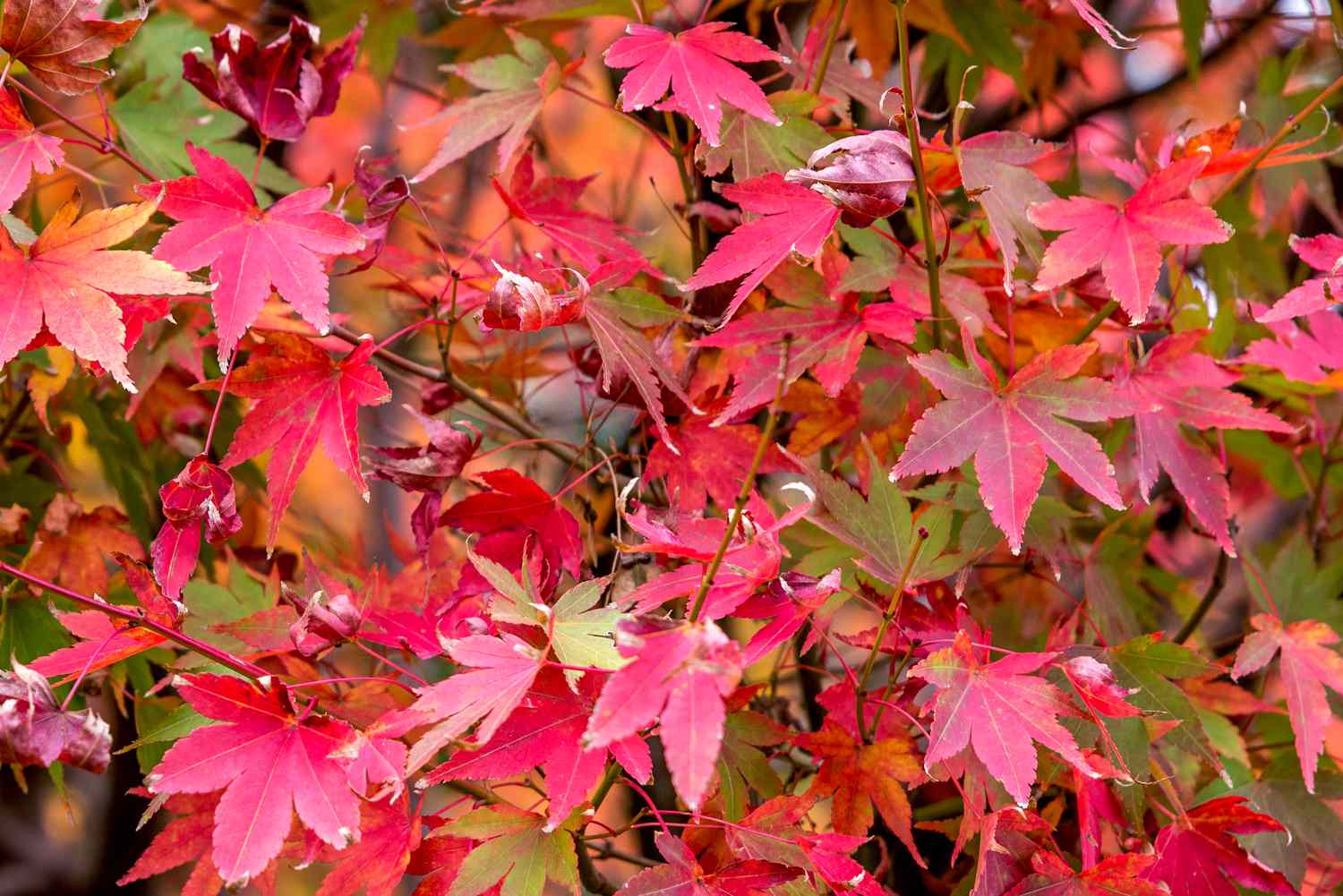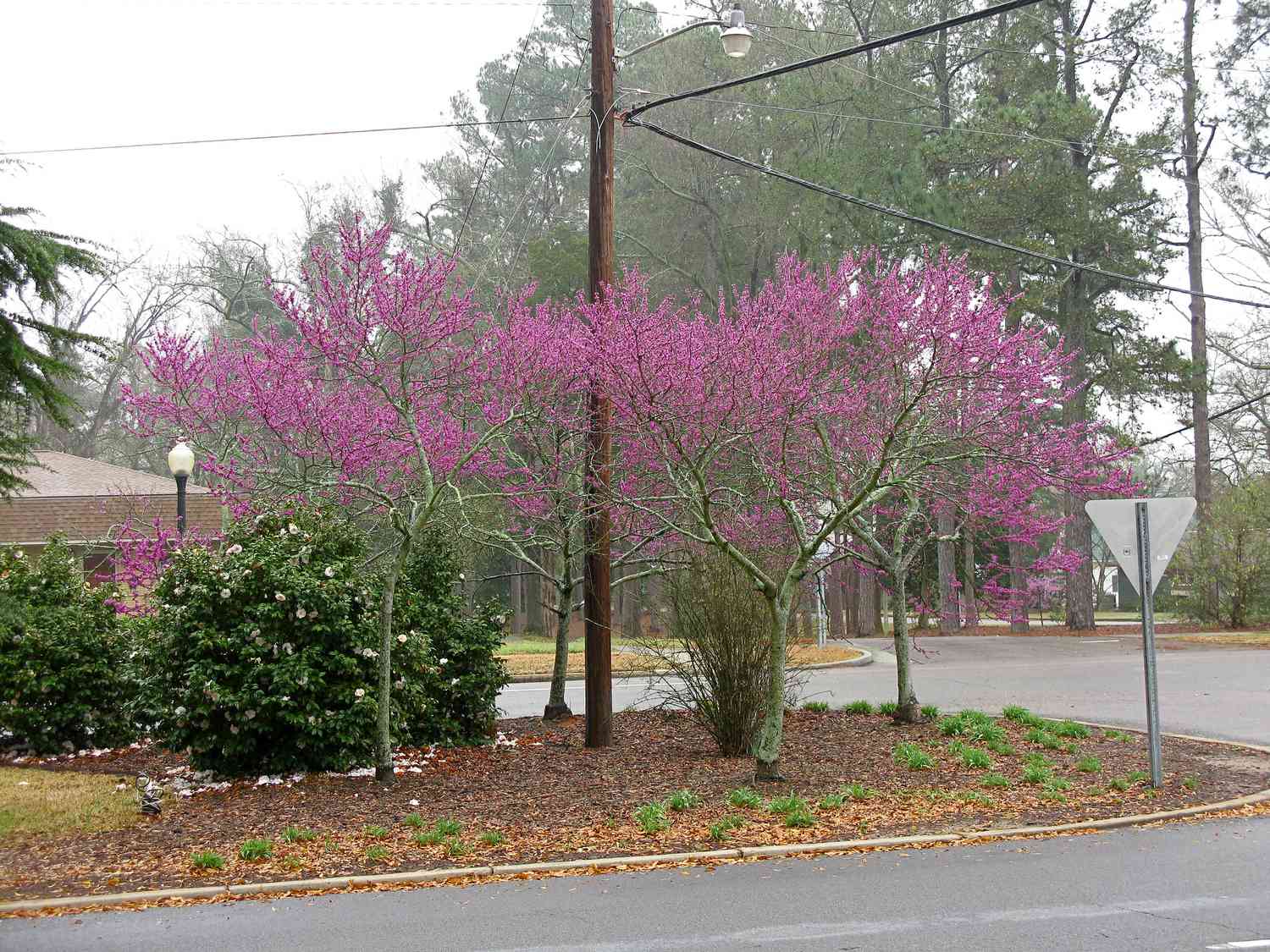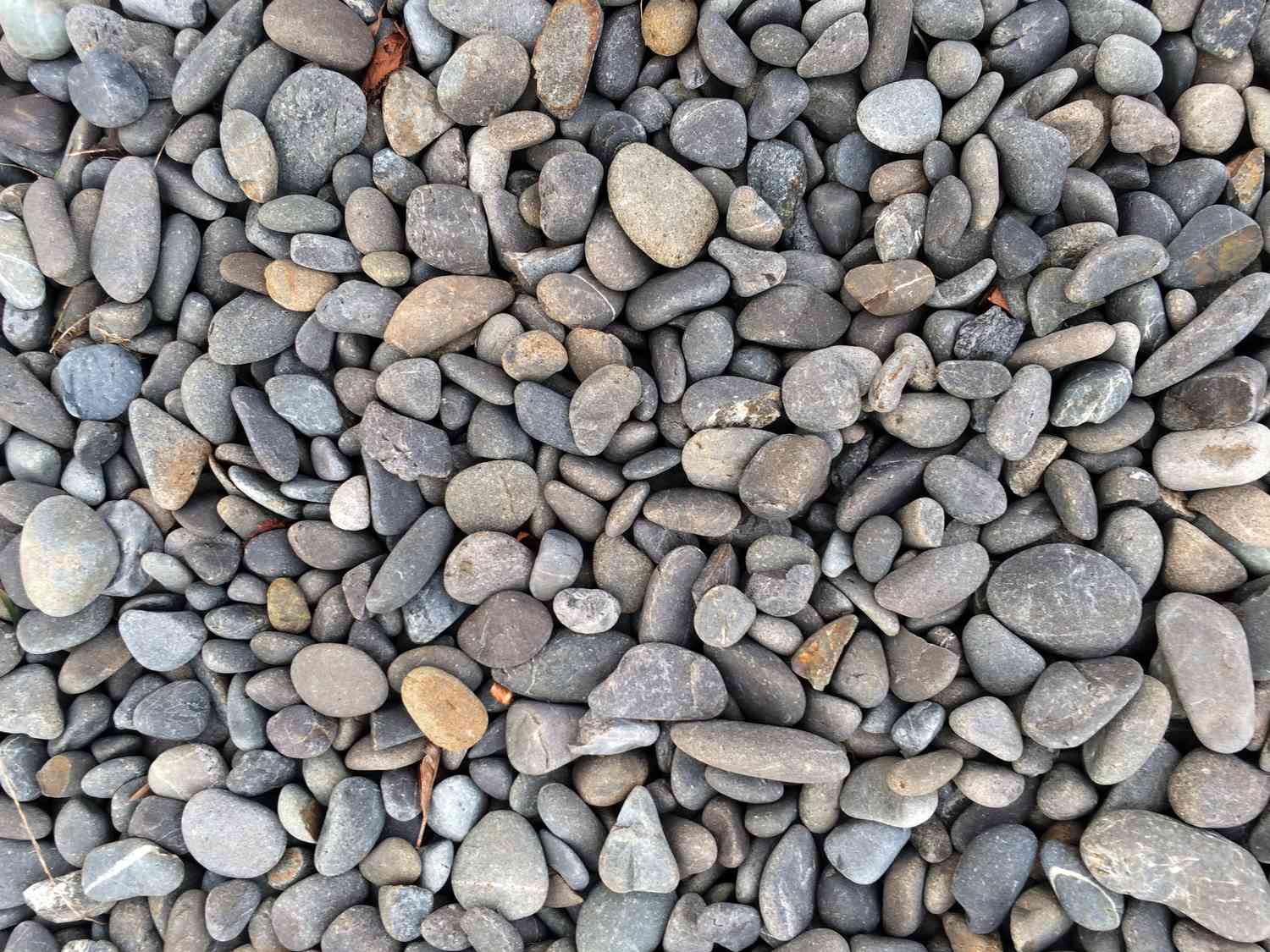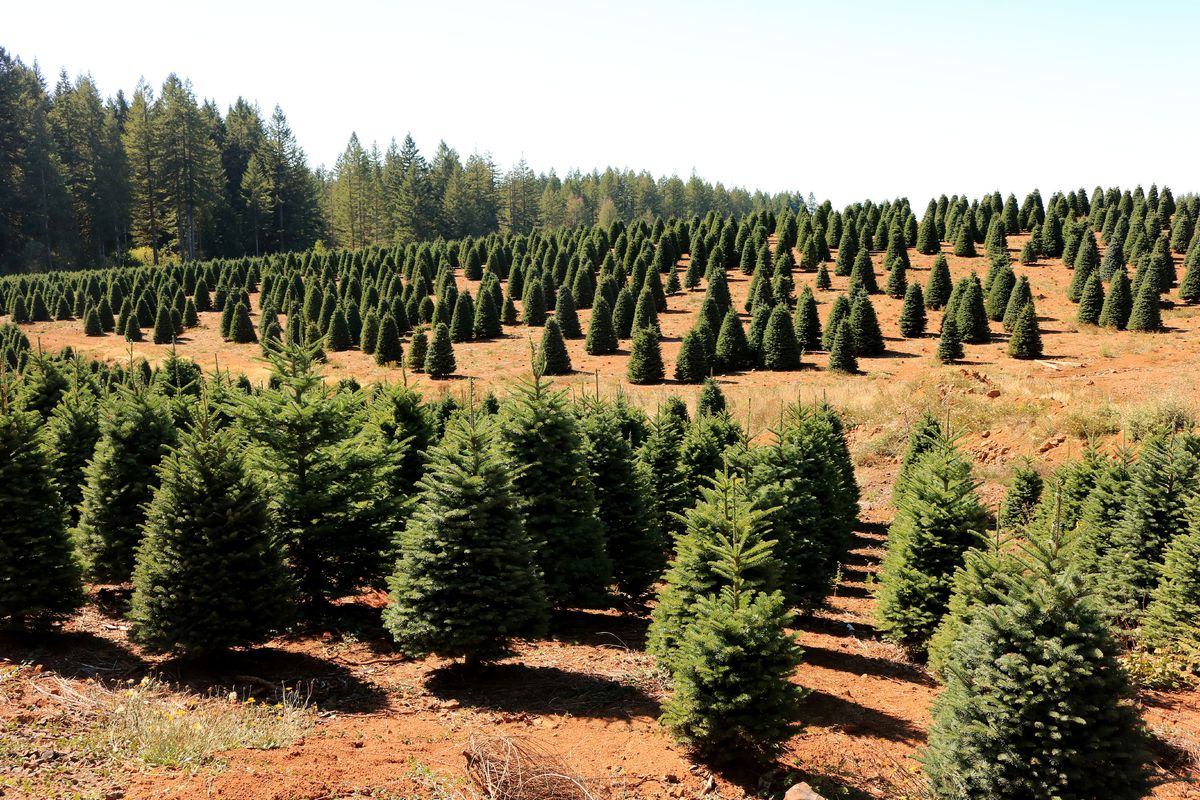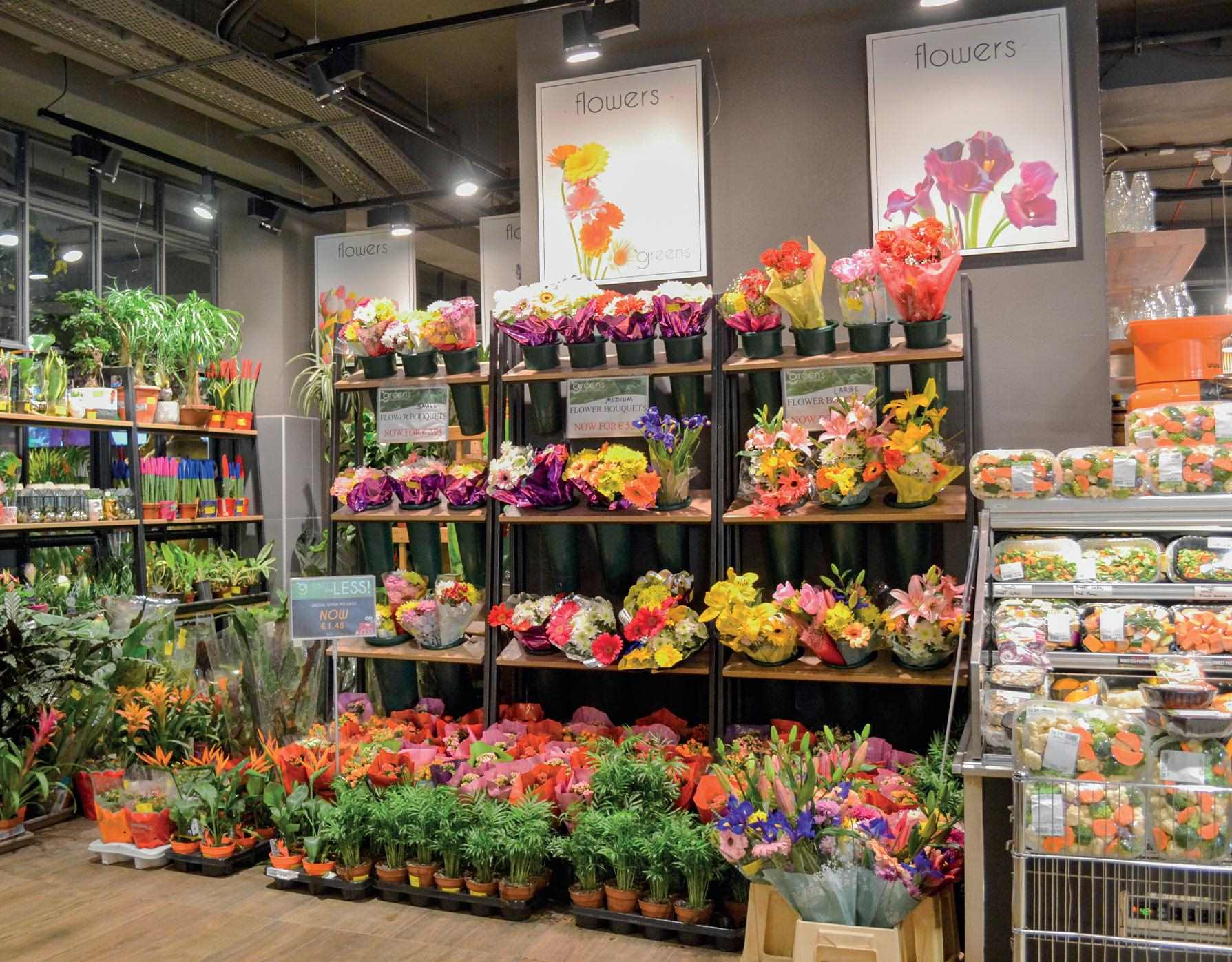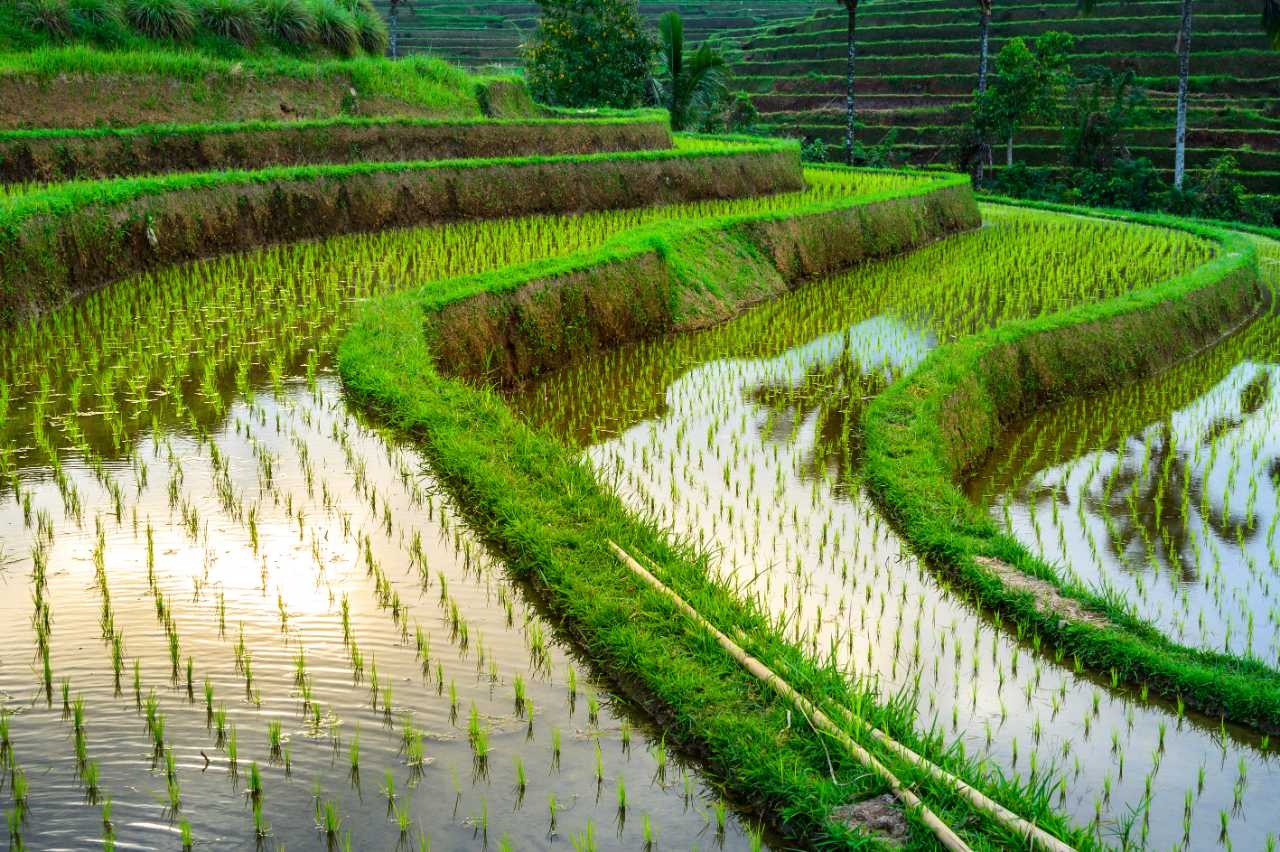Home>Gardening Basics>Tools and Equipment>How Much Do Farm Irrigation Systems Cost
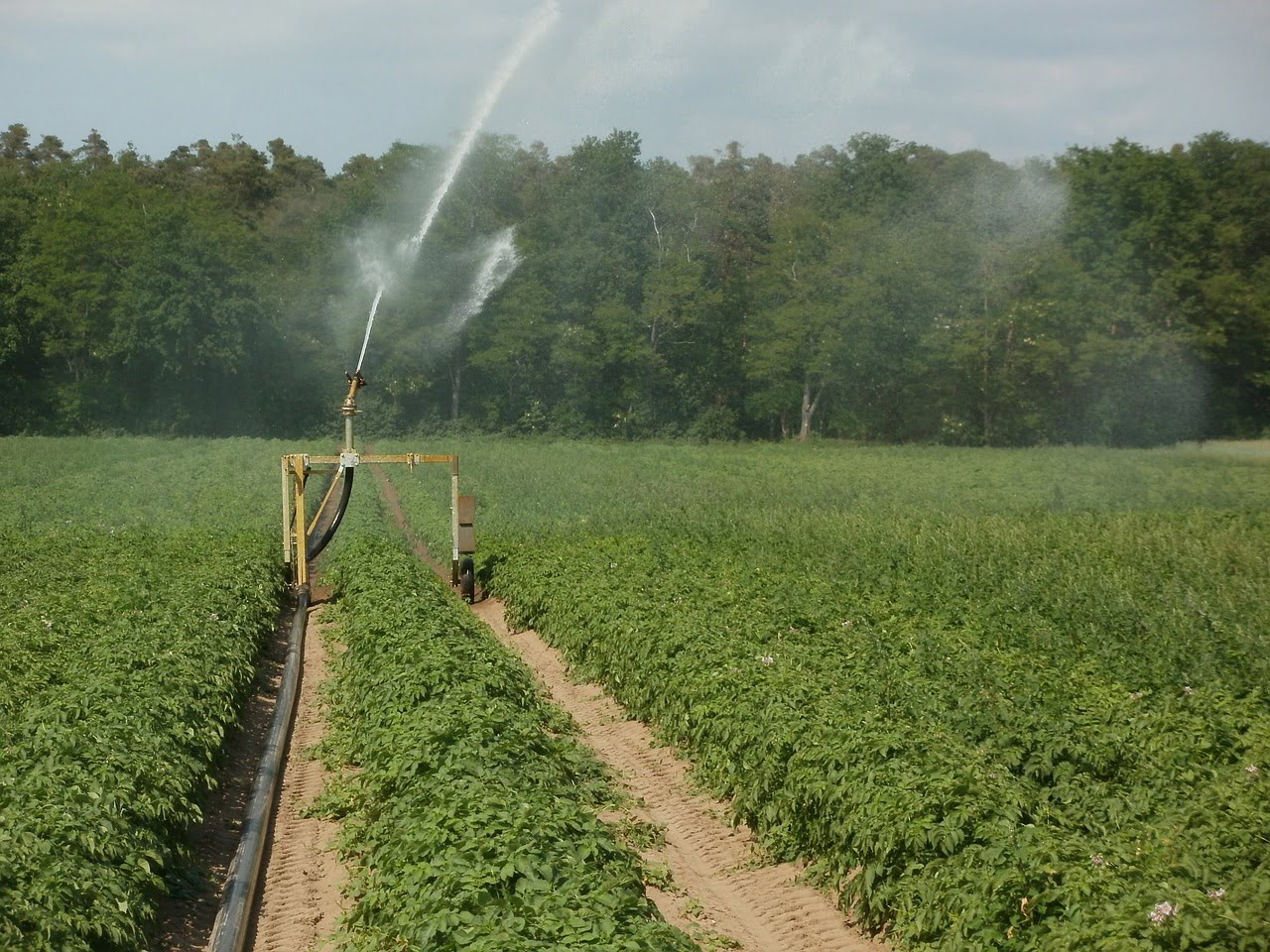

Tools and Equipment
How Much Do Farm Irrigation Systems Cost
Modified: January 22, 2024
Looking to invest in farm irrigation systems? Find out the cost of tools and equipment, so you can make an informed decision.
(Many of the links in this article redirect to a specific reviewed product. Your purchase of these products through affiliate links helps to generate commission for Chicagolandgardening.com, at no extra cost. Learn more)
Table of Contents
- Introduction
- Factors Affecting Farm Irrigation System Costs
- Types of Farm Irrigation Systems
- Drip Irrigation Systems
- Sprinkler Irrigation Systems
- Center Pivot Irrigation Systems
- Costs Associated with Farm Irrigation Systems
- Equipment Costs
- Installation Costs
- Maintenance Costs
- Water Source and Supply Costs
- References
Introduction
Welcome to the world of farm irrigation systems! As a farmer, you understand the crucial role that water plays in the success of your crops. Whether you have a small garden or a large-scale agricultural operation, investing in an efficient and reliable irrigation system is essential for optimal yields and sustainable farming practices.
Implementing the right irrigation system for your farm can significantly improve water distribution, reduce water wastage, and enhance crop health. However, it’s important to consider the costs involved in installing and maintaining such systems.
In this article, we will explore the factors that influence farm irrigation system costs and delve into the different types of irrigation systems available. Additionally, we will discuss the various expenses associated with these systems, including equipment costs, installation costs, maintenance costs, and water source and supply costs. By gaining a better understanding of these factors, you will be equipped to make informed decisions about implementing an irrigation system that best suits your farm’s specific needs, while staying within your budget.
So, whether you are a seasoned farmer looking to upgrade your existing irrigation system or a novice getting started in the world of agriculture, this article will provide you with valuable insights into the costs associated with farm irrigation systems. Let’s dive in!
Factors Affecting Farm Irrigation System Costs
When it comes to farm irrigation system costs, several factors come into play. Understanding these factors can help you determine the overall expenses involved and make informed decisions about the best irrigation system for your farm. Here are the key factors that can influence the cost of your farm irrigation system:
- Size of the Farm: The size of your farm is one of the most significant factors affecting irrigation system costs. Larger farms typically require more equipment and materials to cover a larger area, resulting in higher expenses.
- Type of Irrigation System: Different types of irrigation systems have varying costs. Drip irrigation systems, for example, are generally more expensive to install but are known for their high efficiency and water savings. Sprinkler and center pivot irrigation systems may have lower upfront costs but can have higher long-term maintenance expenses.
- Topography of the Land: The terrain of your farm can impact the complexity and costs of installing an irrigation system. If your land has slopes, valleys, or uneven surfaces, additional equipment or modifications may be required, leading to higher expenses.
- Water Availability: The availability of water sources on your farm can greatly influence irrigation system costs. Farms with readily available water sources, such as lakes or rivers, may have lower setup costs compared to farms that require drilling wells or implementing water storage solutions.
- Climate and Crop Requirements: The climate of your region and the water requirements of your crops will affect the type and extent of irrigation needed. If you live in an arid region or grow water-intensive crops, you may need a more advanced and costly irrigation system.
It’s important to consider these factors and evaluate your farm’s unique requirements before making any investment in an irrigation system. Working with irrigation specialists and conducting a thorough analysis of your farm’s needs can help you determine the most cost-effective and efficient solution.
Types of Farm Irrigation Systems
When it comes to farm irrigation systems, there are several options available, each with its own advantages and considerations. Understanding the different types of irrigation systems can help you choose the most suitable one for your farm. Here are the main types of farm irrigation systems:
- Drip Irrigation Systems: Drip irrigation systems deliver water directly to the plant’s root zone, minimizing water wastage. They consist of a network of tubes or pipes with emitters that release water in a slow and controlled manner. Drip irrigation systems are ideal for areas with limited water availability and for crops that require precise water application.
- Sprinkler Irrigation Systems: Sprinkler irrigation systems distribute water over the farm using overhead sprinklers. They can be designed with rotating sprinklers or fixed spray heads, depending on the area’s water requirements. Sprinkler systems are suitable for a wide range of crops and are known for their versatility and ease of use.
- Center Pivot Irrigation Systems: Center pivot irrigation systems consist of a central pivot point from which long arms with sprinklers extend. The system employs a circular motion, allowing for efficient coverage of large farm areas. Center pivot systems are often used for large-scale agriculture and are known for their high water application uniformity.
- Flood Irrigation Systems: Flood irrigation, also known as surface irrigation, involves flooding the fields with water. While it is one of the oldest and simplest irrigation methods, flood irrigation can be inefficient, as it may result in water runoff and uneven distribution. This method is commonly used for large crops, such as rice or corn.
- Subsurface Irrigation Systems: Subsurface irrigation systems involve placing water directly underneath the soil surface, allowing for targeted water delivery to the plant roots. This method reduces evaporation and water loss, making it highly efficient. Subsurface systems are commonly used in horticulture and greenhouse operations.
Each type of irrigation system has its own advantages and considerations, including upfront costs, water efficiency, maintenance requirements, and suitability for specific crops. It’s crucial to assess your farm’s needs and consult with irrigation experts to determine the most appropriate irrigation system for your specific circumstances.
Drip Irrigation Systems
Drip irrigation systems are widely recognized for their efficiency and effectiveness in delivering water directly to the plant’s root zone. This method minimizes water wastage through evaporation and runoff, making it an ideal choice for farmers aiming to conserve water and reduce costs. Here’s what you need to know about drip irrigation systems:
How Drip Irrigation Systems Work:
In a drip irrigation system, water is delivered through a network of tubes or pipes with small emitters or drippers strategically placed along the planting rows. These emitters release water in a slow and controlled manner, allowing it to drip directly onto the soil surface near the plant roots. This targeted approach ensures that water is delivered precisely where it is needed, reducing water loss and promoting plant health.
Benefits of Drip Irrigation Systems:
- Water Efficiency: Drip irrigation systems are known for their high water efficiency, as they deliver water directly to the root zone, minimizing evaporation and runoff.
- Improved Plant Health: By delivering water directly to the plant’s roots, drip irrigation systems promote healthier and more robust plant growth, leading to higher yields and better crop quality.
- Precise Nutrient Application: Drip systems can also be used to apply fertilizers and other nutrients directly to the root zone, ensuring that plants receive the necessary nutrients for optimal growth.
- Weed Control: Drip irrigation systems target water delivery to the plant roots, minimizing moisture on the soil surface and reducing weed growth.
- Reduced Labor Requirements: Once installed, drip irrigation systems require less labor-intensive maintenance compared to other irrigation methods.
Considerations for Drip Irrigation Systems:
While drip irrigation systems offer numerous benefits, there are some factors to consider when implementing this system:
- Upfront Costs: Drip irrigation systems can have higher upfront costs compared to other irrigation methods due to the need for specialized tubing, emitters, filters, and controllers.
- System Design: Proper design and layout are essential for optimal water distribution and avoiding issues such as uneven watering or clogging of emitters.
- Regular Maintenance: Drip systems require periodic maintenance to clean filters, inspect emitters, and ensure the system is functioning properly.
- Water Quality: The quality of water used in the drip system is critical to prevent emitter clogging. Water filtration and treatment may be necessary depending on the water source.
In summary, drip irrigation systems are a highly efficient method of delivering water to crops while minimizing water wastage. By considering factors such as upfront costs, system design, and maintenance requirements, you can make an informed decision about implementing a drip irrigation system on your farm.
Sprinkler Irrigation Systems
Sprinkler irrigation systems are one of the most commonly used methods for irrigating a wide range of crops. These systems distribute water over the farm using overhead sprinklers, simulating natural rainfall. If you’re considering sprinkler irrigation for your farm, here’s what you need to know:
How Sprinkler Irrigation Systems Work:
In a sprinkler irrigation system, water is pumped through a network of pipes that are equipped with sprinkler heads. These sprinkler heads release water in a uniform spray, distributing it over the intended area. The sprinkler heads are strategically placed to ensure even coverage and efficient water distribution.
Benefits of Sprinkler Irrigation Systems:
- Versatility: Sprinkler irrigation systems are adaptable and can be used in a variety of field conditions, making them suitable for a wide range of crops.
- Easy Installation: Installing sprinkler systems is relatively straightforward, and they can be tailored to fit different field sizes and shapes.
- Uniform Water Distribution: Sprinkler systems provide even water distribution, ensuring that all plants receive a consistent amount of water for healthy growth.
- Temperature Control: In hot climates, sprinkler systems can help cool down the field by spraying water into the air, reducing heat stress on the plants.
- Frost Protection: Sprinklers can also be used for frost protection by creating a protective layer of ice on plants, insulating them from freezing temperatures.
Considerations for Sprinkler Irrigation Systems:
While sprinkler irrigation systems have several advantages, there are a few factors to consider when opting for this method:
- Water Loss: Sprinklers can be susceptible to water loss due to evaporation and wind drift. It’s important to choose the right sprinkler heads and adjust the system properly to minimize these losses.
- Maintenance: Regular maintenance is required to ensure proper functioning of sprinkler heads, including cleaning or replacing clogged nozzles and checking for leaks.
- Soil Erosion: High-pressure sprinkler systems can lead to soil erosion if the water application rate exceeds the soil’s infiltration capacity. Proper soil management practices can help mitigate this issue.
- Energy Consumption: Sprinkler systems require energy to operate pumps and distribute water, so it’s essential to factor in the energy costs associated with running the system.
In summary, sprinkler irrigation systems offer versatility and uniform water distribution, making them a popular choice for many farmers. By considering factors such as water loss, maintenance requirements, and potential soil erosion, you can make an informed decision about implementing a sprinkler irrigation system on your farm.
Center Pivot Irrigation Systems
Center pivot irrigation systems are a highly efficient method for irrigating large agricultural fields. These systems consist of a central pivot point from which long arms with sprinklers extend, resembling the spokes of a wheel. If you’re considering center pivot irrigation for your farm, here’s what you need to know:
How Center Pivot Irrigation Systems Work:
In a center pivot irrigation system, water is pumped through a pipeline that is connected to the central pivot point. The pivot point rotates slowly, allowing the sprinklers attached to the long arms to distribute water in a circular pattern. As the system rotates, it evenly irrigates a large area, applying water to crops in a manner similar to natural rainfall.
Benefits of Center Pivot Irrigation Systems:
- Efficient Water Use: Center pivot systems have high water application uniformity, ensuring that each area of the field receives an equal amount of water.
- Wide Coverage: These systems can cover large areas, making them suitable for extensive agricultural operations.
- Reduced Labor Requirements: Once properly installed and programmed, center pivot systems can operate automatically, minimizing the need for manual intervention.
- Uniform Crop Growth: The consistent water application of center pivot systems promotes even crop growth, leading to higher yields and better crop quality.
- Precision Control: Many modern center pivot systems come equipped with advanced controls, allowing farmers to adjust water distribution based on crop needs and field conditions.
Considerations for Center Pivot Irrigation Systems:
While center pivot irrigation systems offer numerous benefits, there are some factors to consider when implementing this method:
- Upfront Costs: Center pivot systems can have higher initial costs compared to other irrigation methods due to the need for a central pivot structure, pipelines, and sprinklers.
- Field Shape and Obstacles: Center pivot systems require a field with a relatively circular or square shape to ensure effective and efficient water distribution. Obstacles such as buildings or trees may hinder the system’s operation.
- Power and Energy: Center pivot systems require a power source to rotate the pivot point and operate the pumping equipment, so it’s important to factor in the energy costs associated with running the system.
- Regular Maintenance: Routine maintenance, such as inspecting sprinklers, checking pipelines for leaks, and adjusting nozzle heights, is necessary to keep the system operating at optimal efficiency.
In summary, center pivot irrigation systems offer efficient and uniform water application over large areas, making them an excellent choice for many farmers. By considering factors such as upfront costs, field shape, and maintenance requirements, you can make an informed decision about implementing a center pivot system on your farm.
Costs Associated with Farm Irrigation Systems
Implementing a farm irrigation system involves various costs that need to be considered when planning your irrigation project. Understanding the different cost components can help you budget effectively and make informed decisions about your irrigation system. Here are the key costs associated with farm irrigation systems:
Equipment Costs:
The cost of the irrigation equipment itself is an essential factor to consider. This includes items such as pumps, pipes, valves, filters, sprinklers, and controllers. The exact equipment needed will depend on the type and size of your irrigation system. High-quality equipment may have a higher upfront cost but can offer better durability and performance in the long run.
Installation Costs:
The installation costs include labor expenses for system assembly, trenching, and pipe laying. The complexity of the installation, such as the field size, topography, and type of system, can impact the installation costs. It’s advisable to hire professional irrigation installers who can ensure proper system setup to avoid and minimize future issues.
Maintenance Costs:
Ongoing maintenance is necessary to keep your irrigation system functioning optimally. This includes routine tasks such as cleaning filters, inspecting and adjusting sprinklers, and replacing worn-out components. Proper maintenance can help prevent costly repairs and ensure the longevity of your irrigation system.
Water Source and Supply Costs:
The cost of water and the infrastructure needed to supply water to your irrigation system is another factor to consider. If you have access to a natural water source like a river, lake, or well, you may need to consider the cost of pumping and treating the water. If your area requires water rights or permits for irrigation, there may be additional costs associated with acquiring and maintaining those permissions.
Energy Costs:
Energy costs are an important consideration, especially for systems that require electric or fuel-powered pumps. The energy needed to operate the pumps and power the system can contribute significantly to the overall operational expenses. Additionally, if you incorporate features such as automated controllers, monitoring systems, or remote access, there may be additional energy costs associated with these components.
It’s essential to research and gather multiple quotes from reputable suppliers and contractors to get a clear understanding of the costs involved. Consider your specific farm requirements, including the size of your operation and crops being grown, to assess the initial investment and ongoing expenses accurately.
By carefully evaluating these costs and understanding the long-term benefits of a well-designed and efficiently operated irrigation system, you can make informed decisions that align with your budget and farming goals.
Equipment Costs
When implementing a farm irrigation system, one of the significant costs to consider is the equipment required for the system’s operation. The specific equipment needed will depend on the type of irrigation system you choose, the size of your farm, and the specific requirements of your crops. Here are the key components and related costs to consider:
Pumps:
Pumps are necessary to move water from the source to the irrigation system. The cost of pumps can vary depending on their capacity, power source, and efficiency. Submersible pumps, centrifugal pumps, or turbine pumps are commonly used in irrigation systems, and prices can range from a few hundred dollars to several thousand dollars.
Pipes and Valves:
Pipes and valves are crucial for transporting and controlling the flow of water within the irrigation system. The cost of pipes will depend on the material and diameter required. Common materials include PVC, polyethylene, and aluminum. Valves, such as gate valves or ball valves, are used to control the water flow in different sections of the system. The number and size of pipes and valves needed will impact the overall cost.
Filters:
Filters are essential to prevent clogging of nozzles and emitters, ensuring the longevity and efficiency of the irrigation system. Different types of filters, such as screen filters, disk filters, or media filters, are available at varying price points. The choice of filter will depend on the water quality and the level of filtration required.
Sprinklers and Emitters:
Sprinklers and emitters are the components responsible for distributing water to the crops. The type and number of sprinklers or emitters needed will depend on factors such as the crop type, spacing, and water distribution requirements. Sprinklers can range in price depending on their design, material, and rotation method. Emitters for drip irrigation systems will vary depending on flow rate and design.
Controllers and Sensors:
Controllers are used to automate and regulate the irrigation system, ensuring precise control over irrigation scheduling and water usage. Depending on the complexity of your system, you may need controllers with different features such as timers, moisture sensors, or weather-based programming. The cost of controllers can vary widely depending on the brand and functionality.
Other Miscellaneous Equipment:
In addition to the main components mentioned above, there may be other miscellaneous equipment required for your irrigation system. This can include fittings, connectors, pressure regulators, and flow meters. These items may seem small, but their cost can add up, so it’s essential to include them in your budget consideration.
When estimating equipment costs, it’s recommended to consult with irrigation suppliers or professionals who can provide accurate pricing information based on your specific needs. Consider factors such as quality, reliability, and warranty when making equipment purchasing decisions.
While equipment costs are a significant upfront investment, selecting high-quality equipment that meets your farm’s requirements can contribute to the long-term success and efficiency of your irrigation system. Proper maintenance and regular inspections will also help prolong the lifespan of your equipment and minimize future replacement costs.
Installation Costs
When implementing a farm irrigation system, the cost of installation is a crucial consideration. Proper installation is essential to ensure the effectiveness and efficiency of the system. Installation costs can vary depending on the size and complexity of the project, as well as the specific requirements of your farm. Here are the key factors to consider when estimating installation costs:
Labor Costs:
Labor costs are a significant component of installation expenses. Hiring skilled professionals or irrigation contractors to install your system ensures that the work is done correctly and efficiently. The complexity of the installation, including terrain, field size, and irrigation system type, can impact labor costs. Some contractors charge a flat fee, while others charge an hourly rate. Obtaining multiple quotes and comparing prices will help you find the most competitive option.
Trenching and Pipe Laying:
The extent of trenching and pipe laying required for the irrigation system will influence installation costs. Trenching involves digging trenches to lay pipes, while pipe laying involves connecting pipes to form the irrigation network. The length and depth of trenches, as well as the depth at which pipes need to be buried, will impact the amount of labor and time required for installation.
Electrical and Plumbing Work:
Depending on the type of irrigation system and the power source used, there may be additional costs for electrical or plumbing work. This includes connecting the irrigation system to a power source and ensuring proper electrical wiring. For systems that require connection to a water supply, plumbing work may be necessary to connect the irrigation pipes to the water source.
Controller and Sensor Installation:
If your irrigation system includes automated controllers or sensors, installation costs will include wiring and mounting these components. Controllers may need to be installed near a power source, while sensors may require proper placement in the field for accurate data collection. The complexity of the system and the number of controllers or sensors needed will influence installation expenses.
Permits and Inspections:
Depending on your location, you may need to obtain permits or schedule inspections before and during the installation process. The costs associated with permits and inspections can vary, so it’s important to check with local authorities to understand the requirements and associated fees.
It’s important to note that installation costs can vary significantly depending on the complexity of the project and the region. Obtaining detailed quotes from reputable installers or contractors will help you estimate installation costs accurately. Additionally, investing in professional installation ensures that your irrigation system is set up correctly, minimizing the risk of future issues that can be costly to repair.
Maintenance Costs
Maintenance is a crucial aspect of keeping your farm irrigation system in optimal working condition. Regular upkeep ensures that the system operates efficiently, extends its lifespan, and minimizes the risk of costly repairs. While maintenance costs can vary depending on the type and size of your irrigation system, here are the key factors to consider when estimating maintenance expenses:
Inspections and Testing:
Regular inspections are essential to identify any issues or potential problems with your irrigation system. This includes checking for leaks, clogged nozzles, or malfunctioning components. Testing the system’s water distribution uniformity and efficiency may also be necessary to ensure optimal performance. Inspections and testing can be done by hiring professional technicians or conducting them in-house, depending on your preference and expertise.
Cleaning and Flushing:
Over time, debris, sediment, and mineral buildup can accumulate in pipes, filters, and sprinklers, affecting the system’s performance. Regular cleaning and flushing of these components are necessary to remove any obstructions and maintain proper water flow. This maintenance task can be done by applying appropriate cleaning solutions or physically removing and cleaning the components.
Replacement of Worn-out Components:
As your irrigation system ages, certain components may wear out and require replacement. This can include worn-out sprinkler heads, damaged pipes, or malfunctioning valves. The frequency of component replacement will depend on factors such as the quality of the components, usage intensity, and environmental conditions. Regularly inspecting the system and replacing worn-out parts promptly can help avoid further damage and ensure the system’s longevity.
Programming and Calibration:
If your irrigation system includes controllers or sensors, regular programming and calibration may be necessary. This includes adjusting irrigation schedules based on crop needs, weather conditions, and soil moisture levels. It’s important to stay updated on technological advancements in irrigation programming and calibration to ensure maximum water efficiency and reduce unnecessary water usage.
Annual Maintenance Contracts:
Some irrigation service providers offer annual maintenance contracts, which provide regular inspections, cleaning, and maintenance for a predetermined fee. These contracts can help ensure that your irrigation system receives proper care on a regular schedule, saving you time and effort while reducing the risk of system failure.
Training and Knowledge:
Investing in training and knowledge development for yourself or your staff is crucial in understanding how to properly operate and maintain your irrigation system. Attend workshops, seminars, or training sessions that provide insights into irrigation system maintenance, troubleshooting, and repairs. This investment in knowledge can help you perform routine maintenance tasks and address minor issues independently, saving on contractor fees.
It’s important to note that the frequency and extent of maintenance tasks may vary depending on factors such as system complexity, weather conditions, and water quality. Regularly budgeting for maintenance costs and staying proactive in scheduling maintenance will help ensure the long-term efficiency and reliability of your farm irrigation system.
Water Source and Supply Costs
Water is a vital resource for farm irrigation, and the cost of accessing a reliable water source and ensuring a sufficient water supply is an important consideration when planning your irrigation system. Several factors can influence the water source and supply costs for your farm.
Natural Water Sources:
If your farm has access to natural water sources such as rivers, lakes, or ponds, the cost of water may be relatively low or even free. However, keep in mind that there may be regulations or permits required to withdraw water from these sources, which may come with associated fees or restrictions.
Water Rights and Permits:
In some regions, farmers are required to obtain water rights or permits to legally access and use water for irrigation purposes. These permits may have associated costs, such as application fees, licensing fees, or annual fees based on the amount of water used. It is essential to research and understand the water rights and permitting process in your area to ensure compliance and avoid any penalties.
Drilling Wells:
If your farm does not have access to natural water sources, drilling a well may be a viable option. The cost of drilling wells can vary depending on factors such as the depth required, the geological conditions in your area, and the equipment and expertise required for the drilling process. Other associated costs may include permits, water quality testing, and well maintenance.
Water Treatment and Filtration:
In some cases, the water available from your chosen water source may require treatment or filtration before it can be used for irrigation. This additional step ensures that the water is free from contaminants, sediment, or high levels of minerals that could clog irrigation components or harm the crops. The cost of water treatment and filtration systems will depend on factors such as the water quality and volume to be treated.
Energy Costs:
If your irrigation system requires energy to pump water from the source to the fields, it’s essential to consider the associated energy costs. This could include electricity costs for running electric pumps or fuel costs for operating diesel or gasoline-powered pumps. Assessing the energy efficiency of your irrigation system and exploring renewable energy options can help reduce energy expenses in the long run.
Water Supply Infrastructure:
Depending on the distance between your water source and the fields, you may need to invest in water supply infrastructure such as pipelines, hoses, or mobile water tanks. The cost of these infrastructure elements will depend on the length and size required for your specific irrigation needs.
It’s crucial to consider the ongoing costs of accessing and supplying water to your irrigation system. This includes not only the direct costs of water but also permits, well maintenance, and energy expenses. By carefully evaluating these costs and exploring options for water efficiency and conservation, you can optimize your irrigation system’s performance while minimizing expenses.
References
Here are some references and resources that you may find helpful in further exploring farm irrigation systems and their associated costs:
1. Agricultural Irrigation Systems: Types, Benefits, and Costs – University of California Agriculture and Natural Resources
Website: https://ucanr.edu/sites/drought/Water_Irrigation/Agricultural_Irrigation_Systems/
2. Irrigation System Cost Estimation – Irrigation Association
Website: https://www.irrigation.org/Sw1213v1/Irrigation_Insights/Estimating_Irrigation_Project_Costs/Sw1213v1/Irrigation_Insights/Estimating_Irrigation_Project_Costs.aspx
3. Drip Irrigation Systems for Small Conventional Vegetable Farms – University of Vermont Extension
Website: http://www.uvm.edu/vtvegandberry/factsheets/drip.pdf
4. Designing and Maintaining Your Irrigation System – Utah State University Cooperative Extension
Website: https://extension.usu.edu/yardandgarden/watering/designing-and-maintaining-your-irrigation-system
5. Farm Irrigation System Checklist – USDA Natural Resources Conservation Service
Website: https://www.nrcs.usda.gov/wps/portal/nrcs/detailfull/national/water/manage/irrigation/?cid=nrcs144p2_027456
It’s always important to consult local agricultural extension services, irrigation specialists, and reputable suppliers for region-specific information and advice regarding farm irrigation systems and associated costs.
